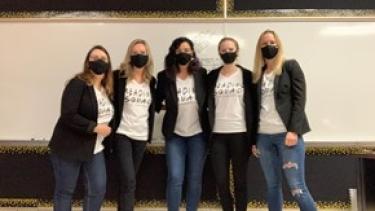
The Ripple Effect
Over the last three years, our district has moved from a literacy intervention model that required identified elementary students to be bussed to another school for an entire school term to a model that provided literacy intervention at their own school. But how do we ensure students receive the necessary tools to be successful in literacy without the specialist teachers? The secret is in the classroom teacher!
The best investment we can make in education is in our teachers. The Early Literacy Support Teachers (ELST) are a team of 5 teachers who are passionate about supporting literacy in schools. They use a collaborative approach to address the literacy needs of K-3 students. It is an inclusive model where the ELST co-plans and co-teaches to provide research-informed literacy instruction to all students in the regular classroom. Where students may need additional literacy support, the ELST collaborates with teachers to provide small group, targeted intervention.
One classroom teacher this year stated that being supported by an ELST “helped me to develop my professional practice. She was a coach, advisor, and a role model by sharing her experience and knowledge.” When a teacher adopts new practices, it is often noticed by other teachers who may ask questions and incorporate it into their routines. This does not happen when students leave the school for literacy supports! This ripple effect occurs because inclusionary practices are collaborative, visible and repeatable!
According to John Hattie’s work, collective teacher efficacy is the number one influencer of student achievement. The work the ELSTs do in schools helps develop that teacher efficacy because they work and learn alongside the teachers. The result is that all students benefit from the targeted instructional practices that result from that collaboration, but the struggling readers benefit the most!